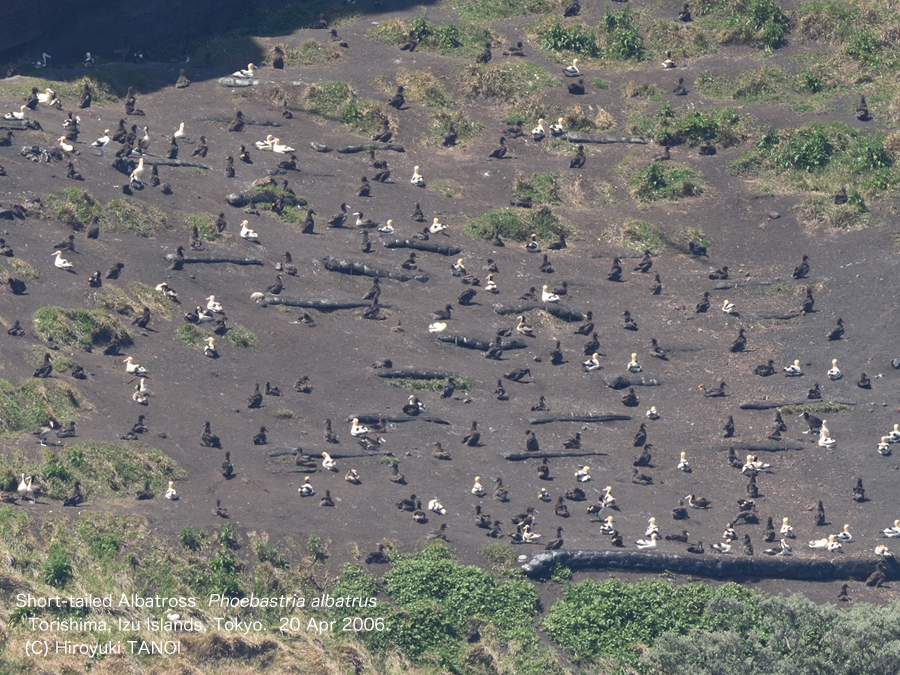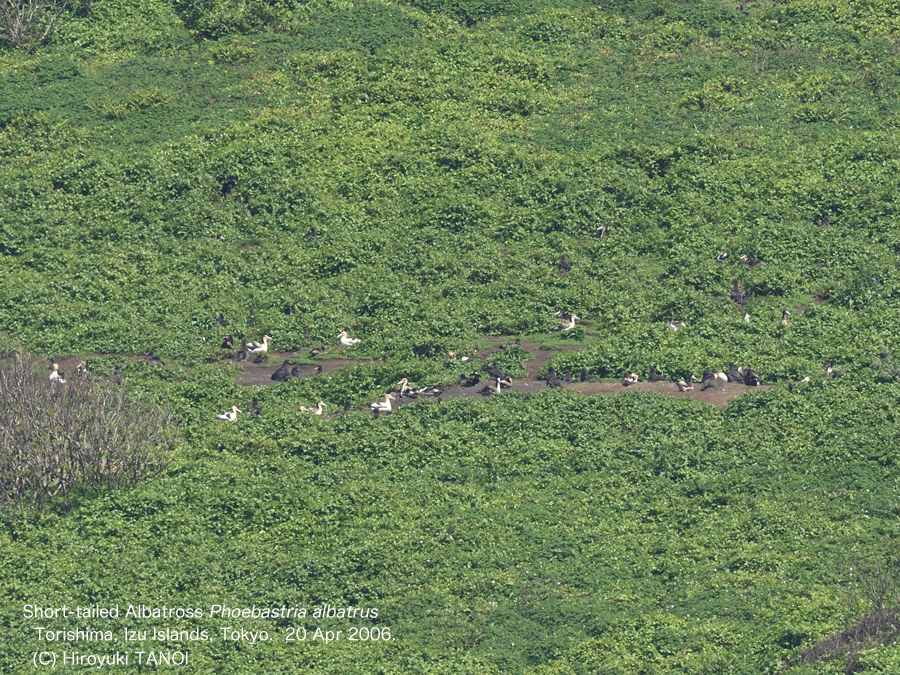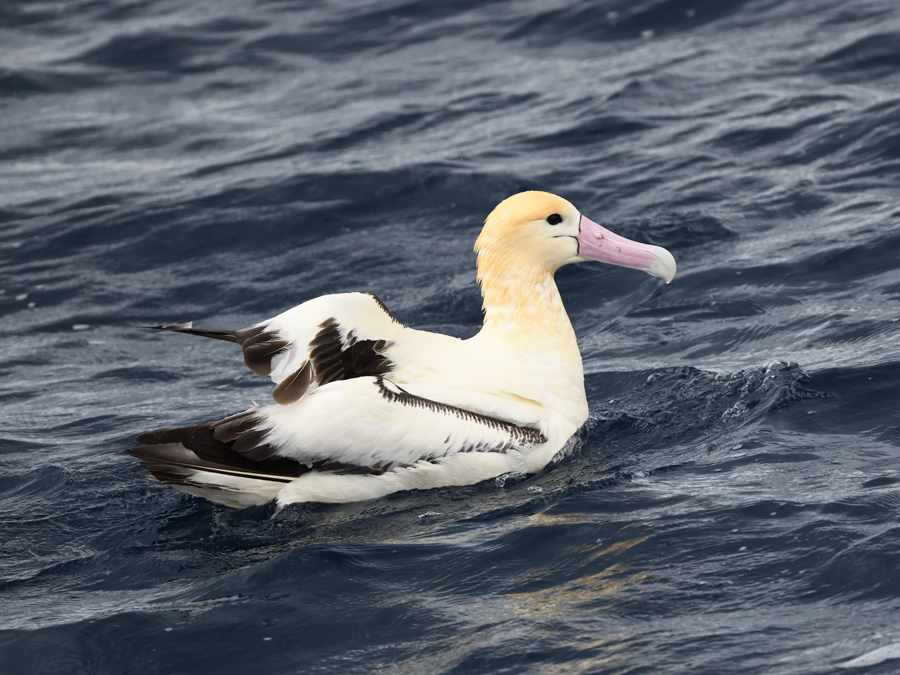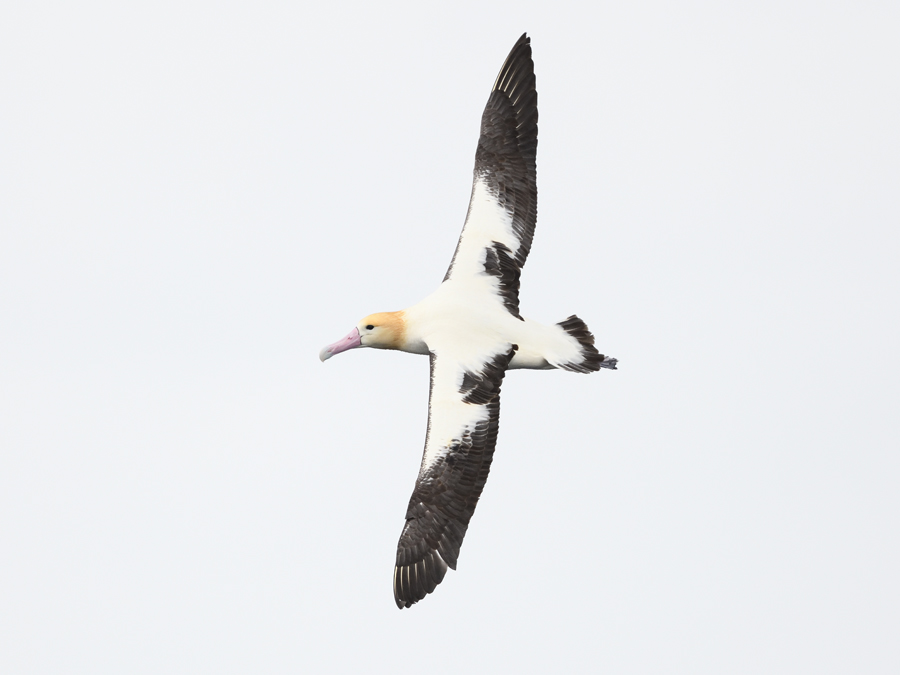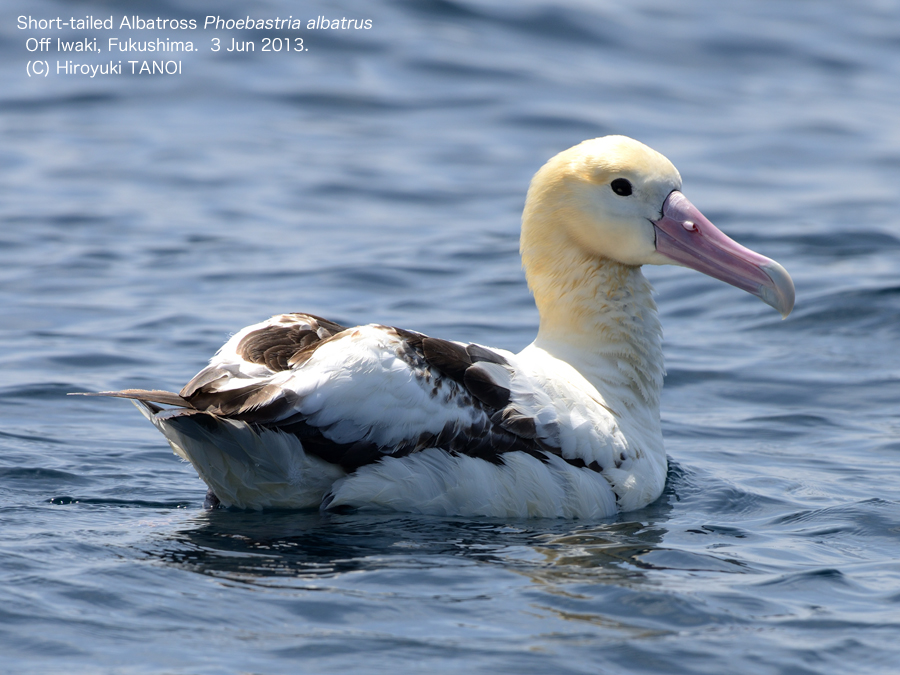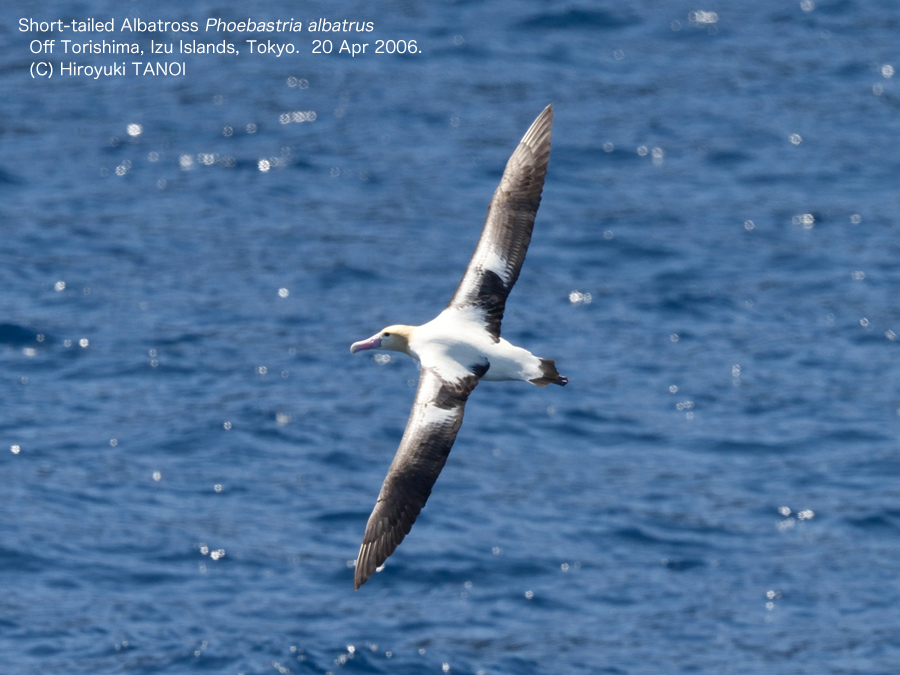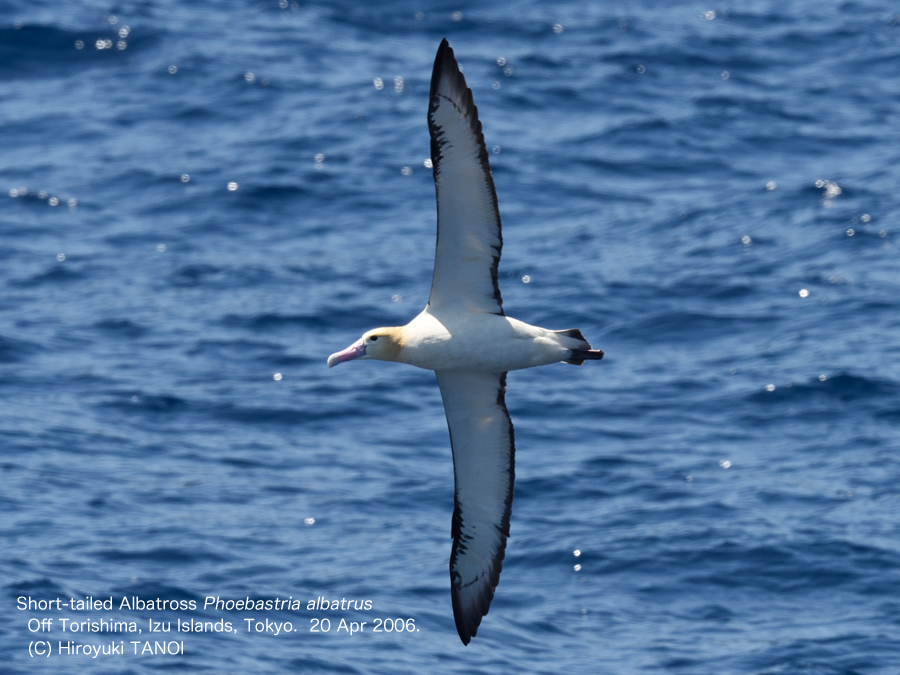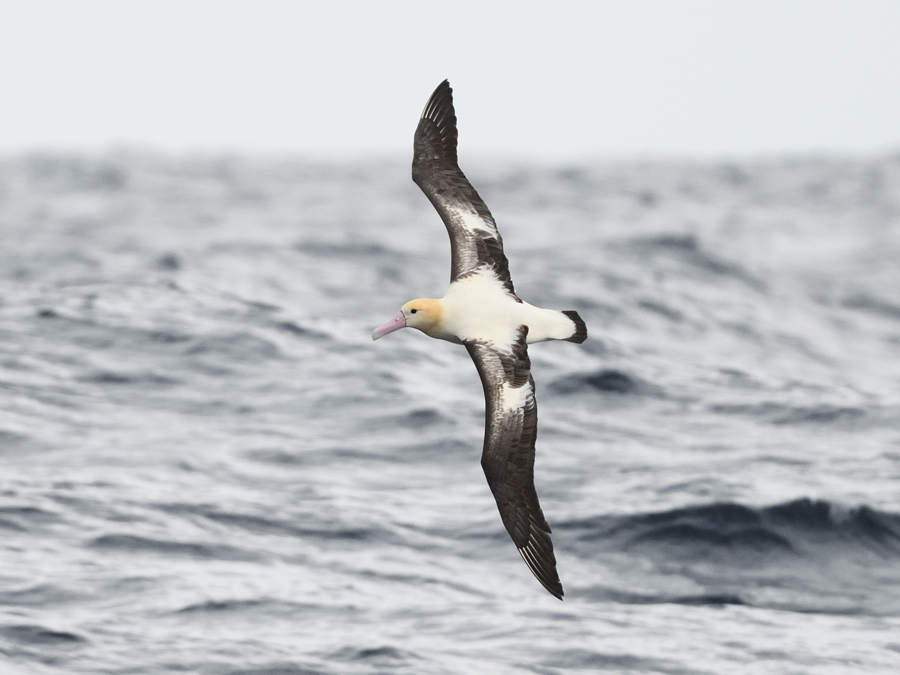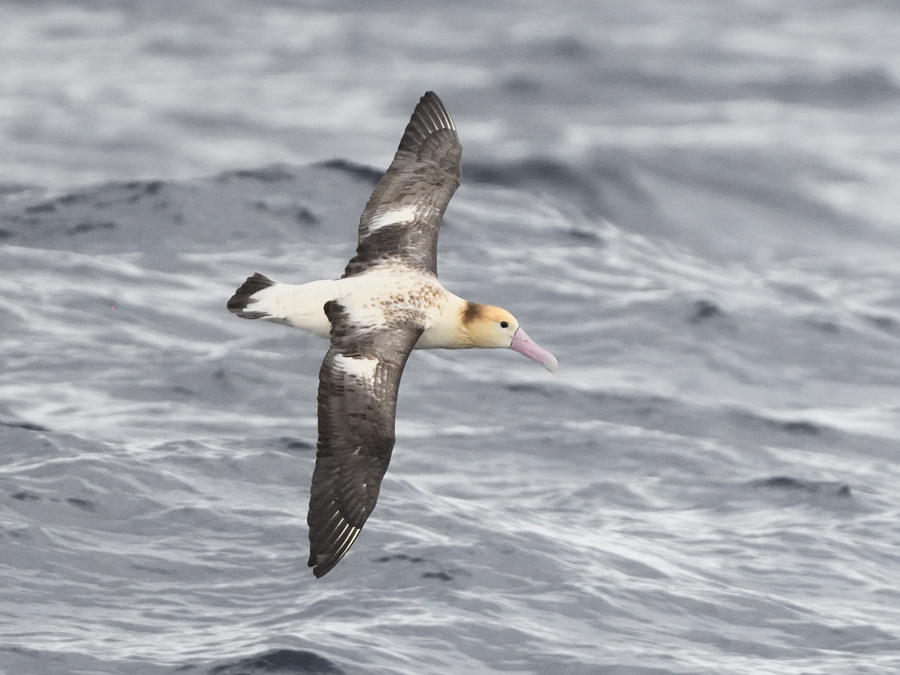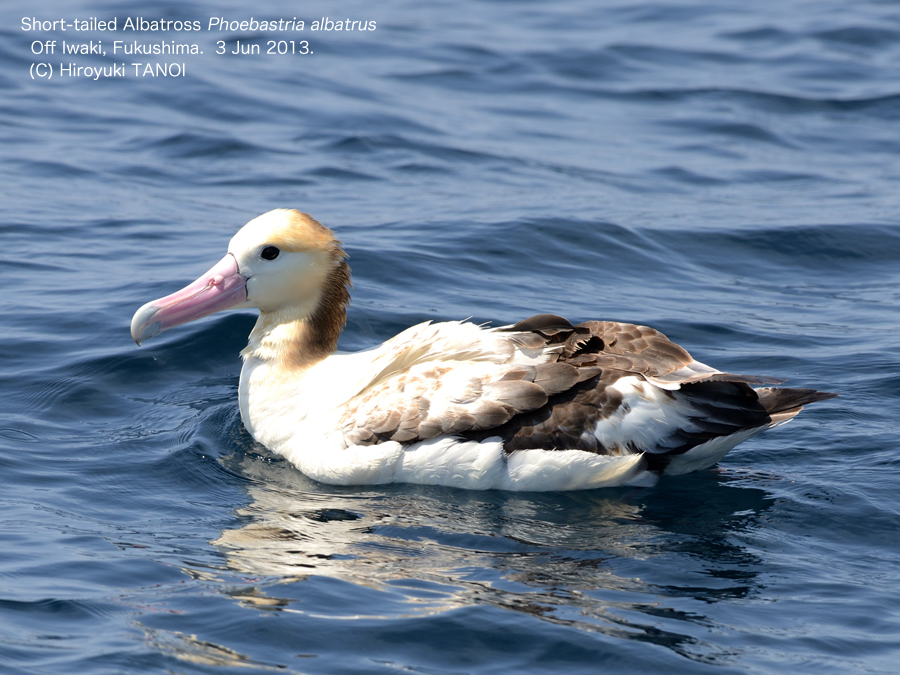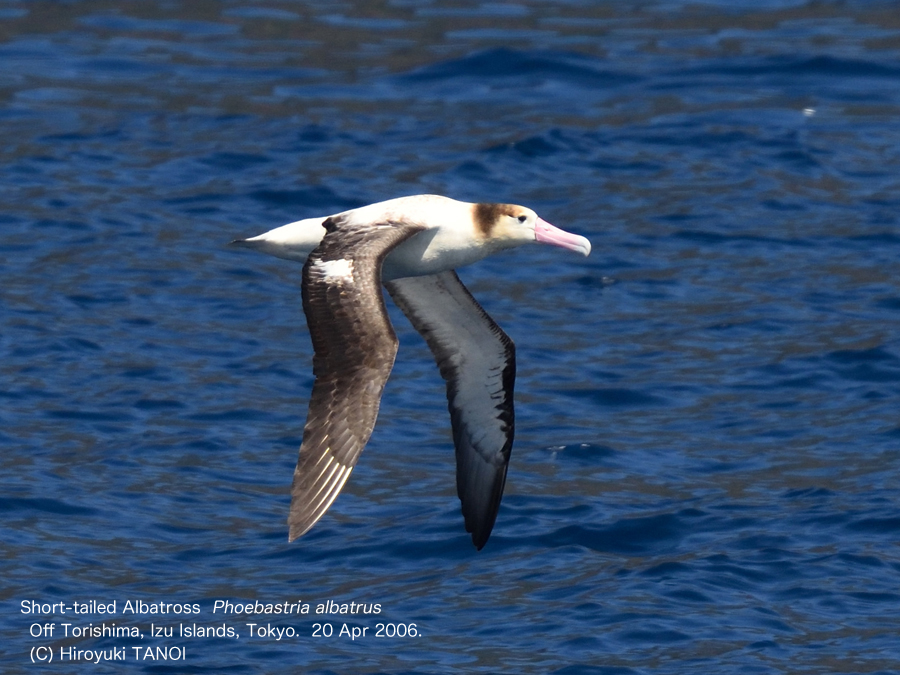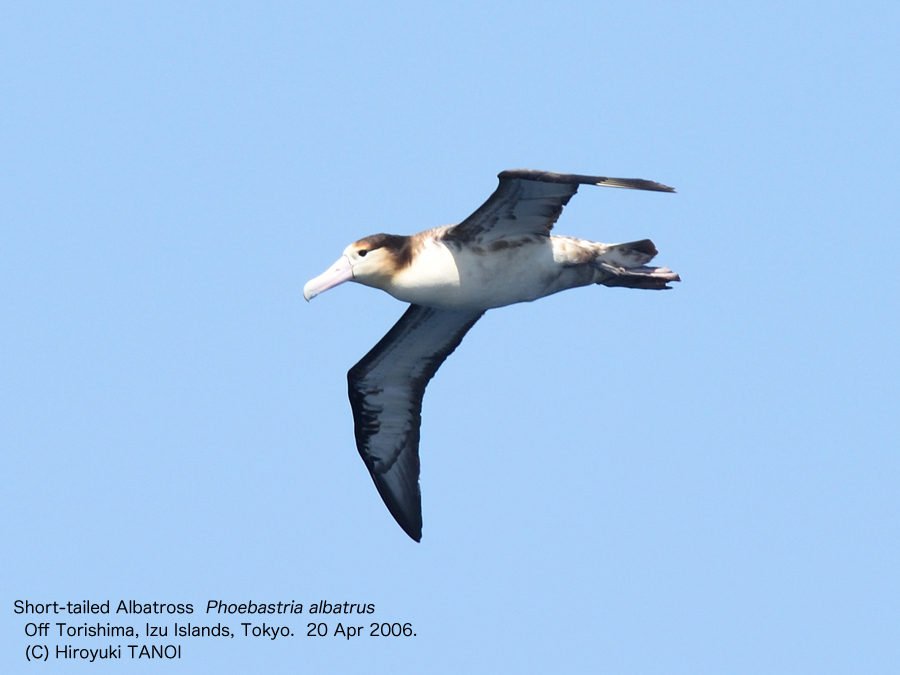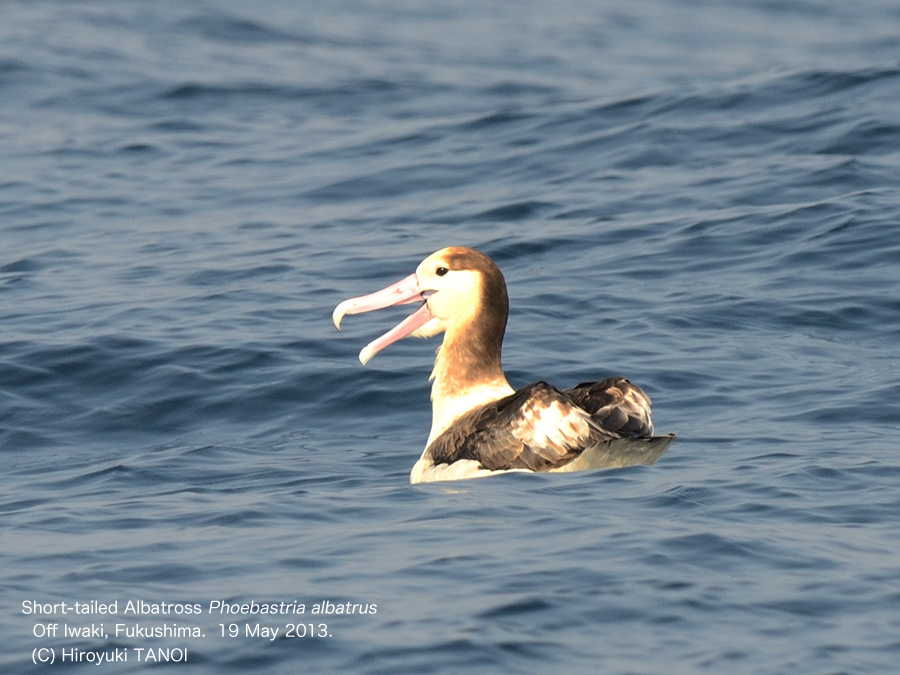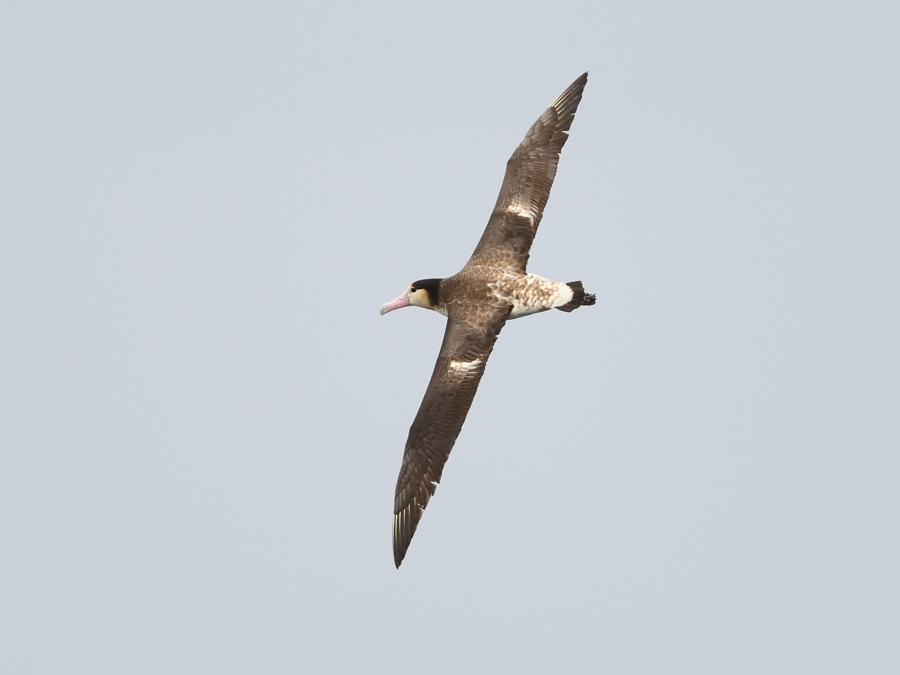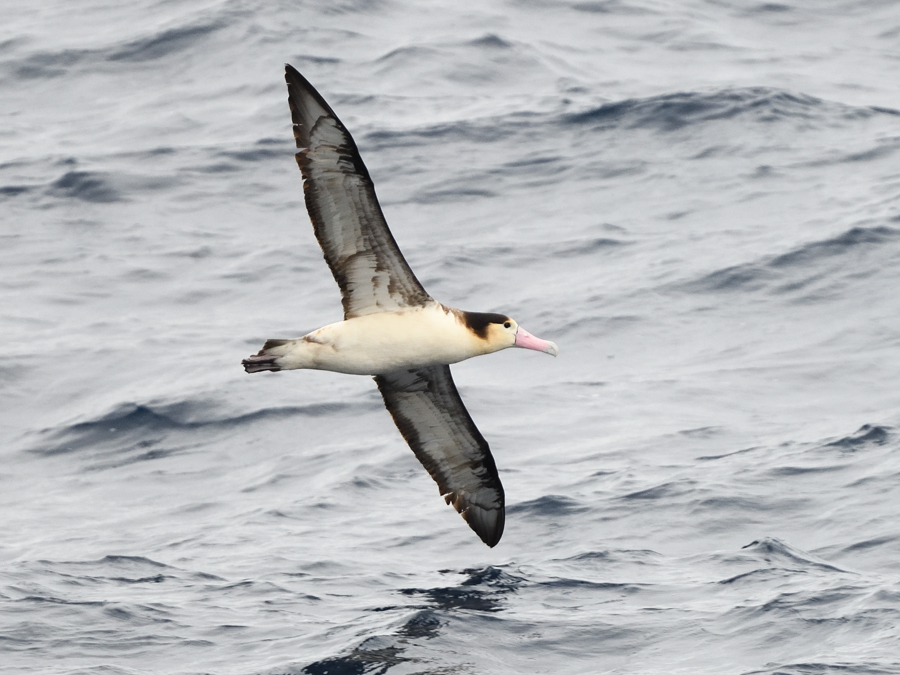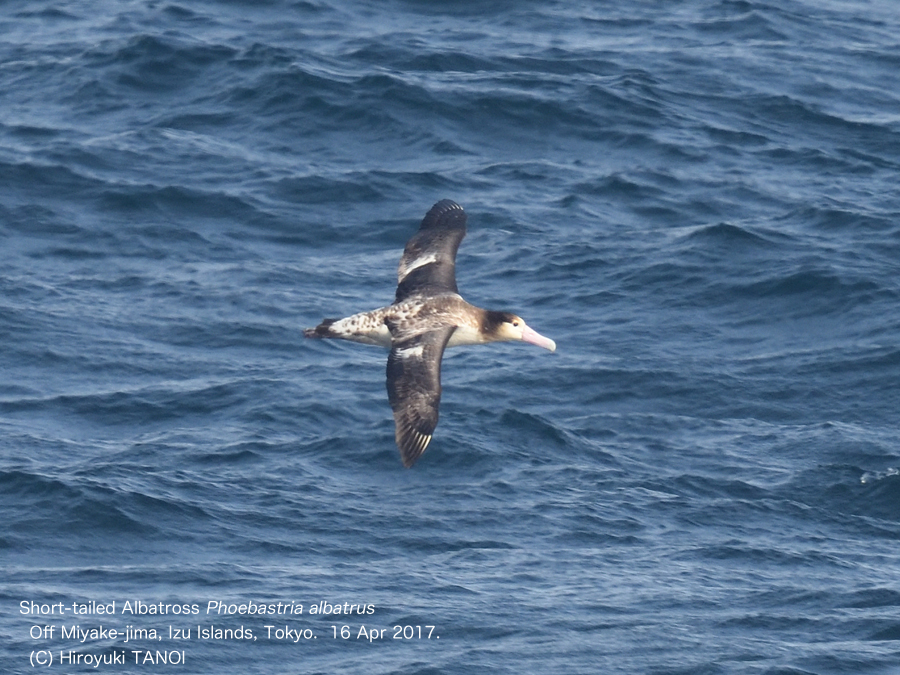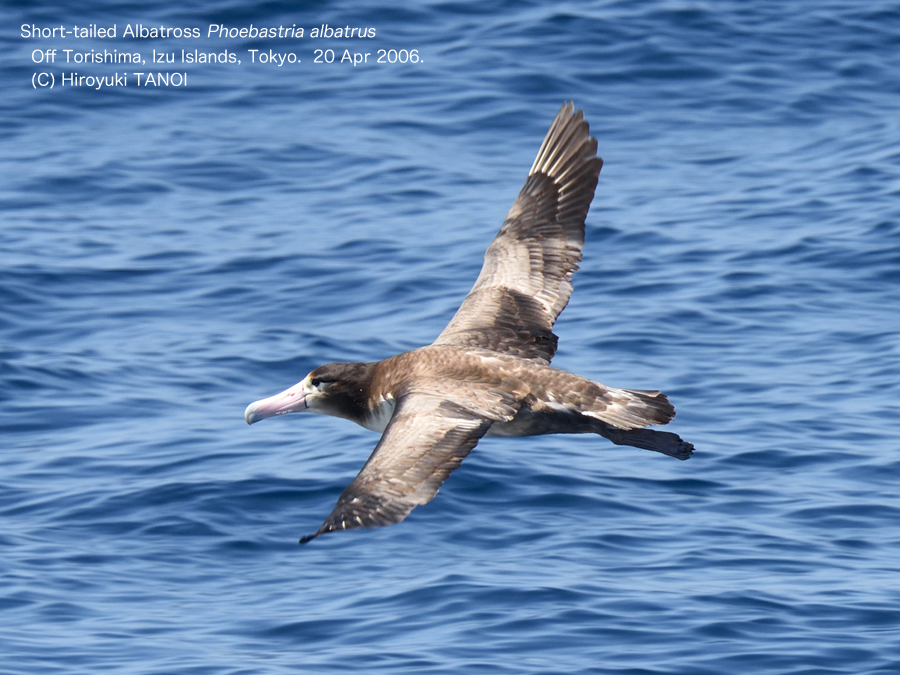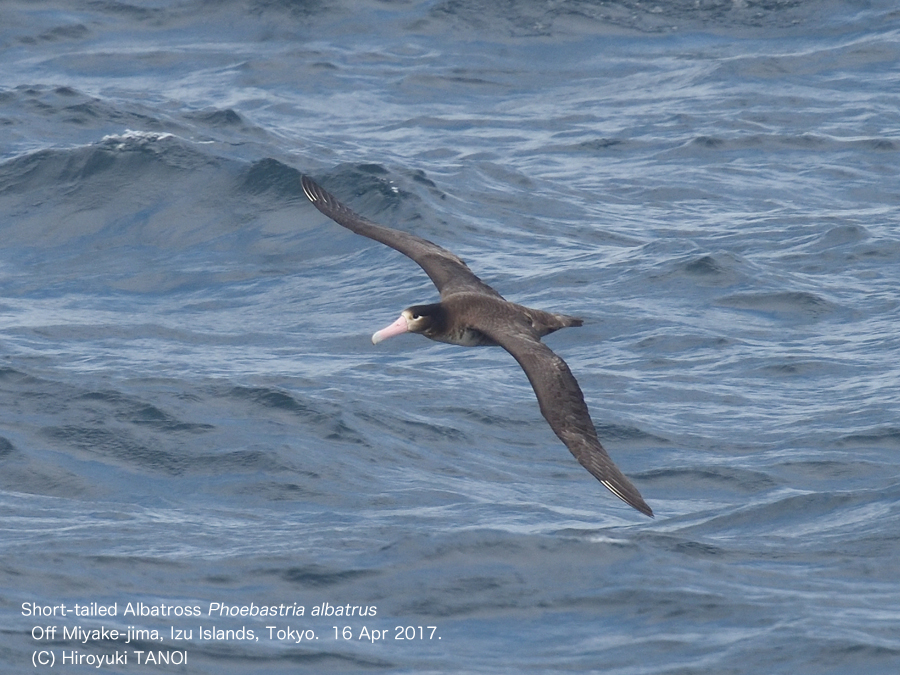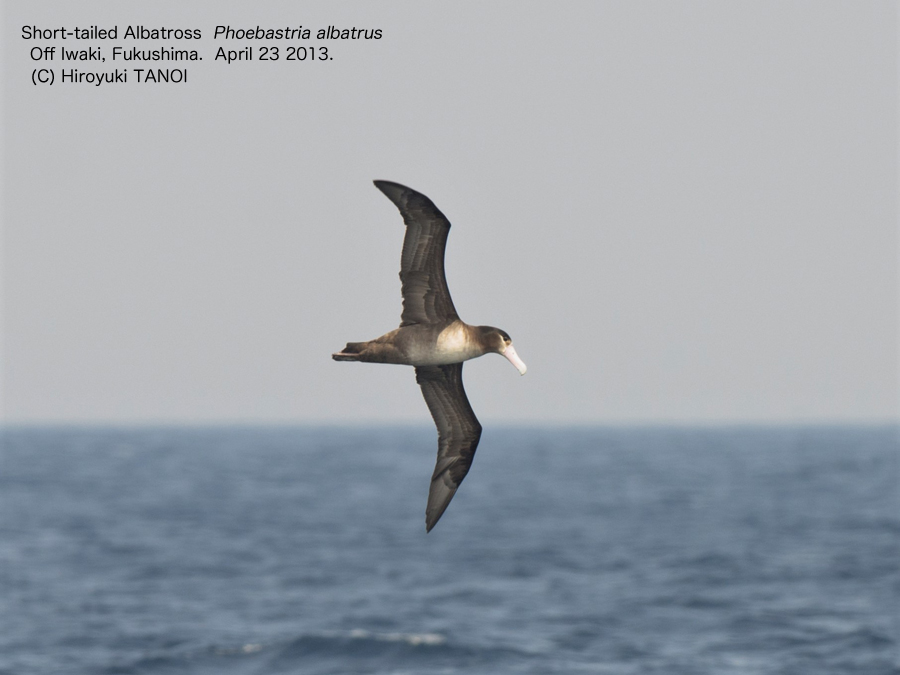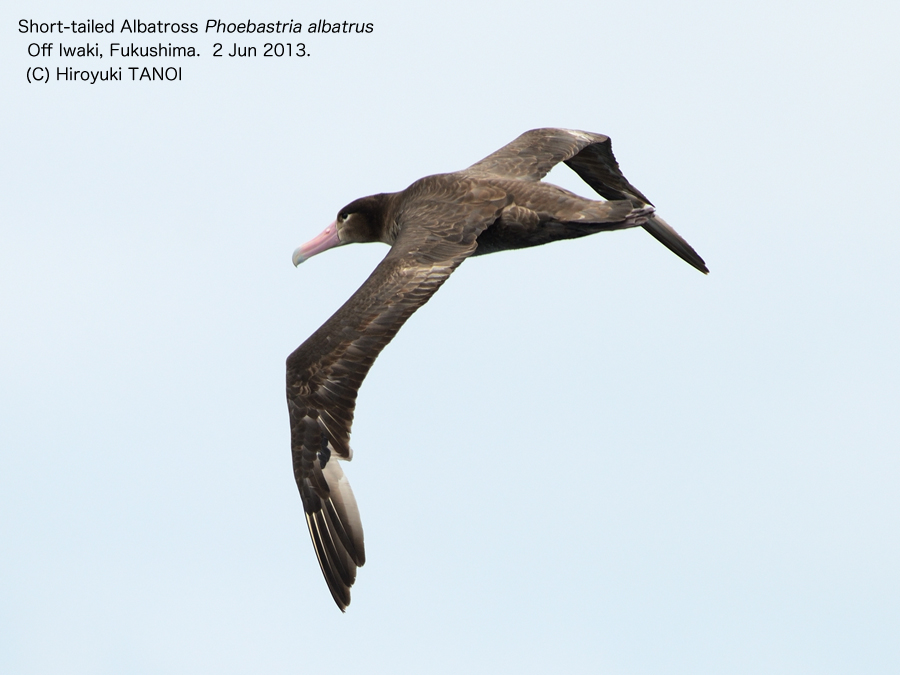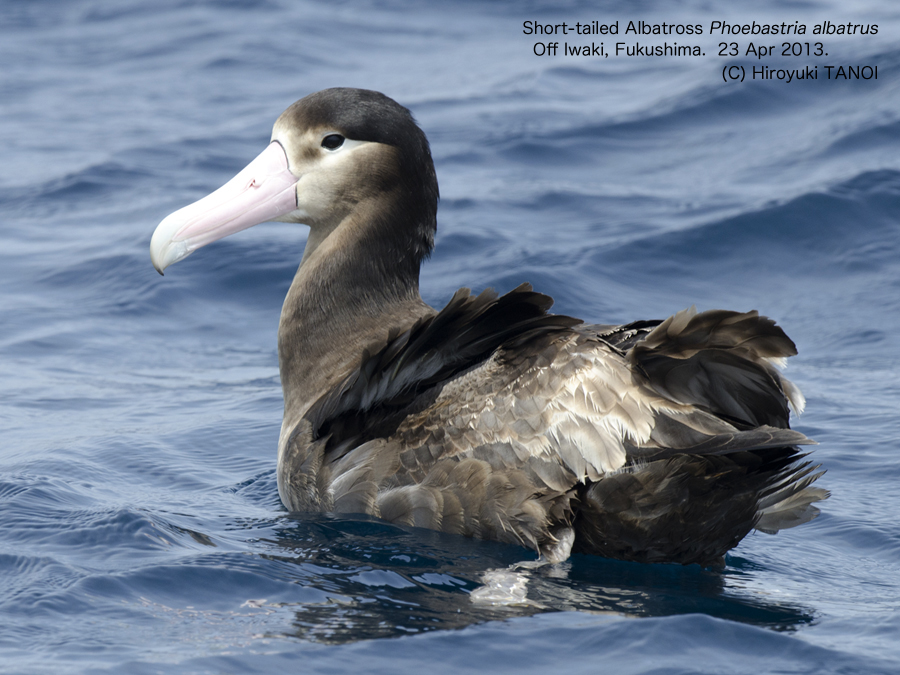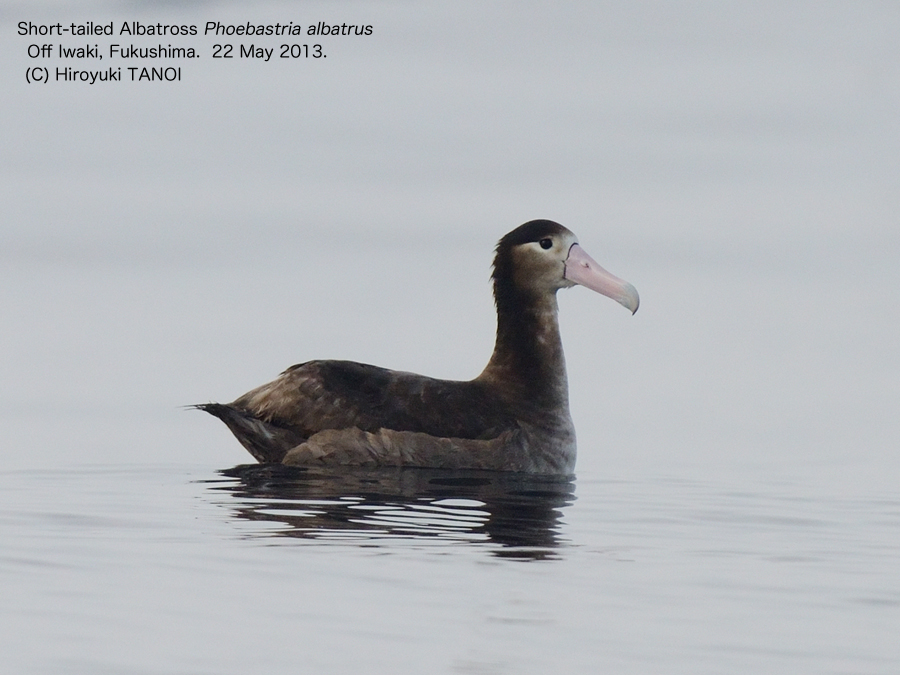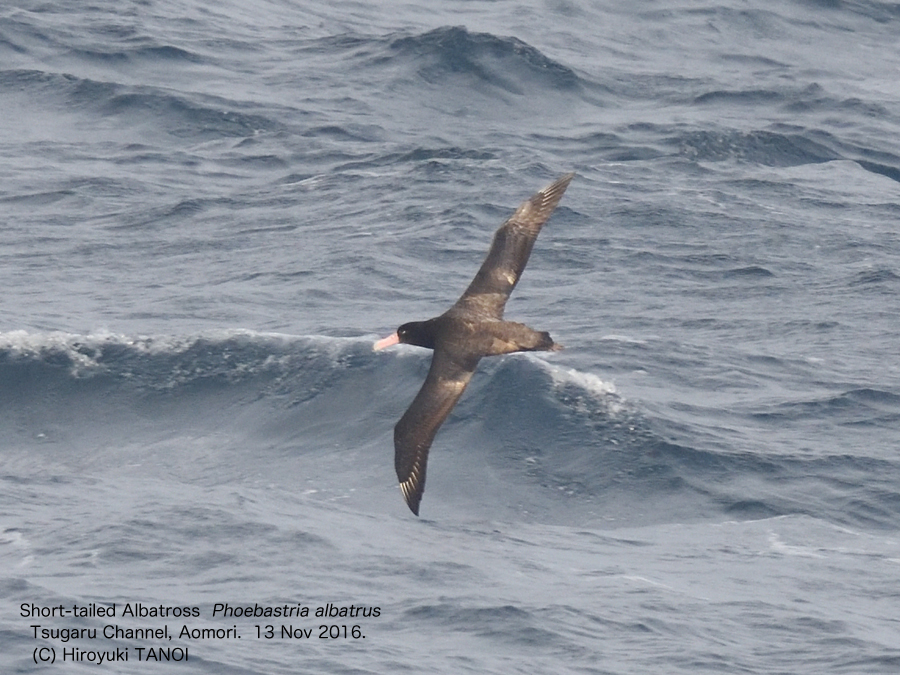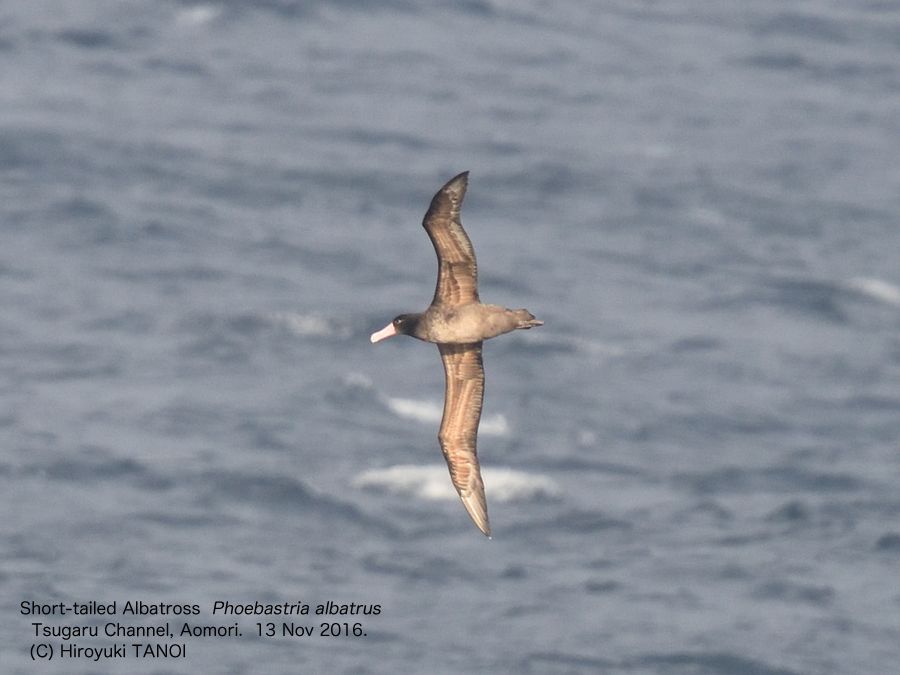Home > Seabirds JP > Albatrosses (Japan) > Short-tailed Albatross
Japanese name: アホウドリ Aho-dori
Phoebastria albatrus
Status : Uncommon to locally common
Distribution : Breeds on Tori-shima (Izu Is.), Kita-kojima and Minami-kojima (Senkaku Is.). A third breeding site is establishing on Muko-jima (Mukojima Is.).
999 chicks were counted on Tori-shima in 2021-2022 breeding season and presumed population size is more than 7,000 in 2022 (山階 2022).
32 chicks and 77 adults and young birds were counted on Minami-kojima, Senkaku Islands in 2002. After that, for political reasons, no survey was conducted in Senkaku Is., but a satellite image count estimated the number of pairs to be 110-140 on Minami-kojima in November 2020. It was difficult to count the birds on Kita-kojima due to many clouds covering the satellite image (環境省 2021).
One or two pairs breed on Muko-jima where establishing a third breeding site after 2012-2013 breeding season. Two chicks were confirmed on Muko-jima in 2021-2022 breeding season. One chick was confirmed on Nakodo-jima (Mukojima Is.) in 2013-2014 breeding season and one fledgling was confirmed on Yome-jima (Mukojima Is.) in 2015-2016 breeding season.
Regularly seen off the Pacific coast side of Hokkaido and Eastern Honshu (Mar to July and Fall off the southwestern part of Hokkaido, Aomori Pref., Iwate Pref.; Feb to June off Fukushima Pref.; Dec to May off Chiba Pref. and Ibaraki Pref.). Local common around the northern part of Izu Islands (Oct.-May), sometimes more than 100 birds are seen from Tachibana-maru (the ferry from Tokyo to Hachijo-jima) especially in Feb to Apr. Uncommon off the eastern part of Hokkaido (May to June). There are some records from off the Okhotsk coast of Hokkaido (Shiretoko Peninsula, Cape Soya), Sea of Japan coast of Eastern Honshu (Akita Pref., Yamagata Pref.). Distribution in the East China Sea is unknown, but there are some records from the ferry (Ishigaki Island-Yonaguni Island), and small numbers are seen off the northeastern coast of Taiwan in Mar and Apr.
Tips : Breeding season is from Oct to May; eggs are laid from late Oct to mid-Nov and incubated for about 65 days, hatching from late Dec to mid-Jan. After about 4 months of brood rearing, adults leave the breeding grounds in early to mid-May. Fledglings leave the nest in late May to early June. They stay around the island for two to three days before gradually leaving the island and migrating to the North Pacific. The earliest individuals are 2 years old, about half are 3 years old, and most are 4 years old, returning to their breeding grounds. They start to breed at 5-6 years of age.
It is estimated that the Senkaku Islands population leaves the nest about two weeks earlier than the Torishima population (山階 2021).
The Torishima type and The Senkaku type
It has been suggested that the populations of Torishima in the Izu Islands and the Senkaku Islands may be different species based on genetic and morphological differences (Eda et. al. 2020). The genetic differences between the two populations are greater than the differences between Black-browed Albatross and Campbell Albatross, for example. In terms of morphology, the Torishima population is larger than the Senkaku population in body size, and the bill of the Senkaku population is longer and slightly narrower than that of the Torishima population when comparing adult birds of the same sex from each population. However, it is difficult to determine which population is which at this time if the presence or absence of leg rings cannot be confirmed in the field (basically all individuals in the Torishima population are fitted with leg rings). Further research is also needed to determine morphological differences at non-adult ages, as these are also unknown.
The Senkaku type is annually seen off Iwate Prefecture in May and off Aomori Prefecture in May and June, with flocks of 10 or more seen off Miyako, Iwate Prefecture. There are records of the Senkaku type off Abashiri Hokkaido. Based on the photographs taken, most of individuals seen around Ishigaki, Yonaguni and Taiwan are the Senkaku type. Regarding records from the Sea of Japan side, the individual observed off Akita Prefecture is considered to be the Torishima type based on the shape of its bill.
環境省web(2021). 衛星画像を用いた鳥類の生息状況調査手法検討業務(中間報告). https://www.env.go.jp/nature/kisho/hogozoushoku/ahoudori_chuukannhoukoku.pdf (閲覧日2021/4/10)
山階web(2021). アホウドリ復活の展望 アホウドリに2種が含まれることが判明.
https://www.yamashina.or.jp/hp/yomimono/albatross/13two_spieces.html (閲覧日2023/5/28)
山階web(2022). アホウドリ復活の展望 アホウドリ最新ニュース.
https://www.yamashina.or.jp/hp/yomimono/albatross/albatross_news/albatross_news.html (閲覧日2023/5/28)
